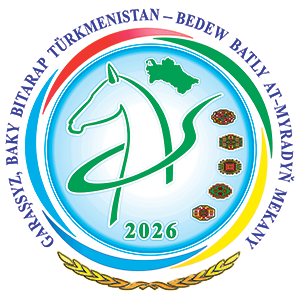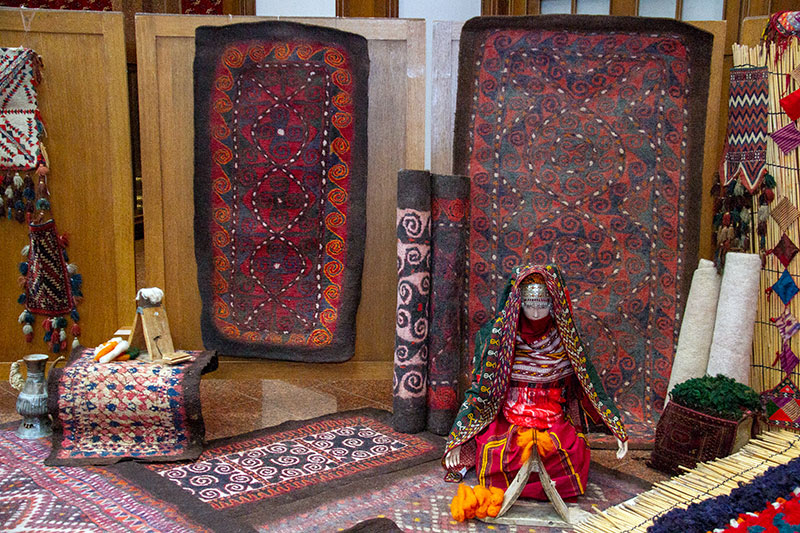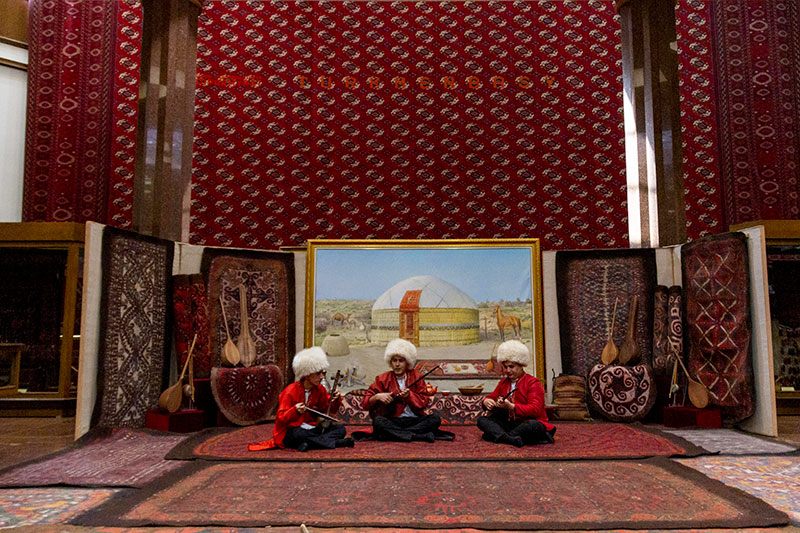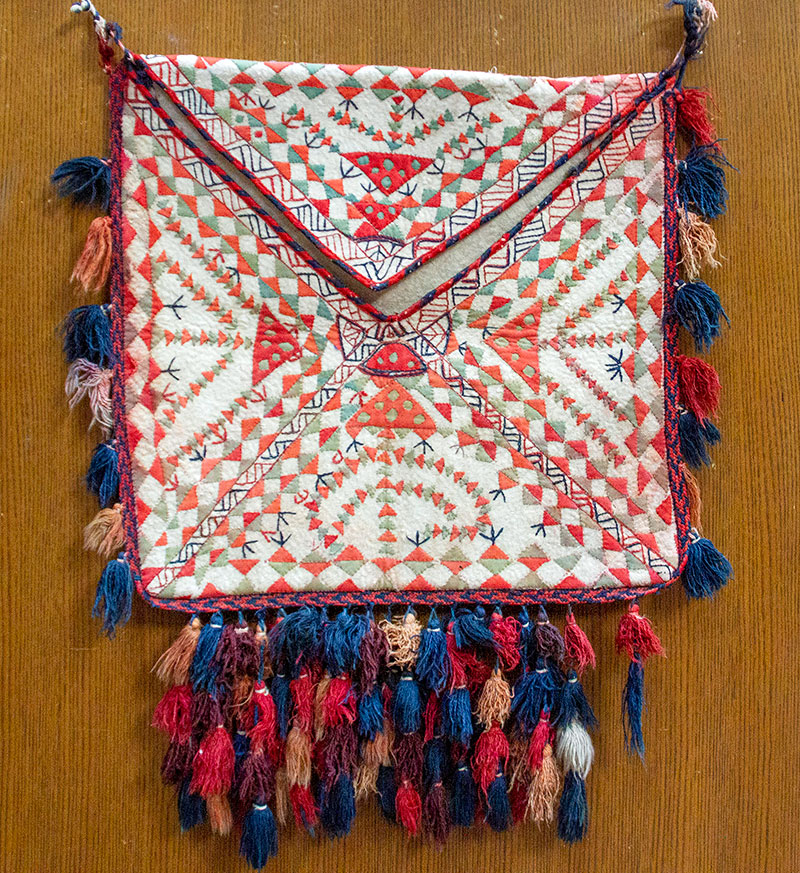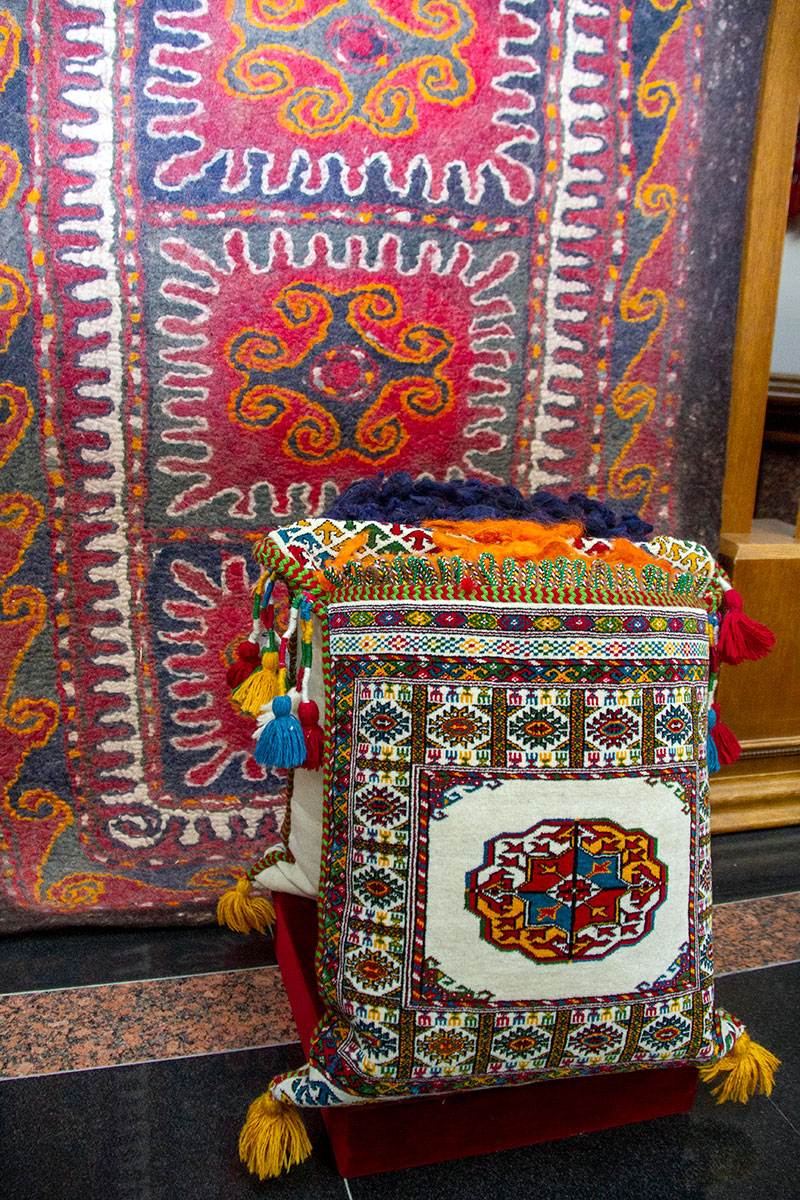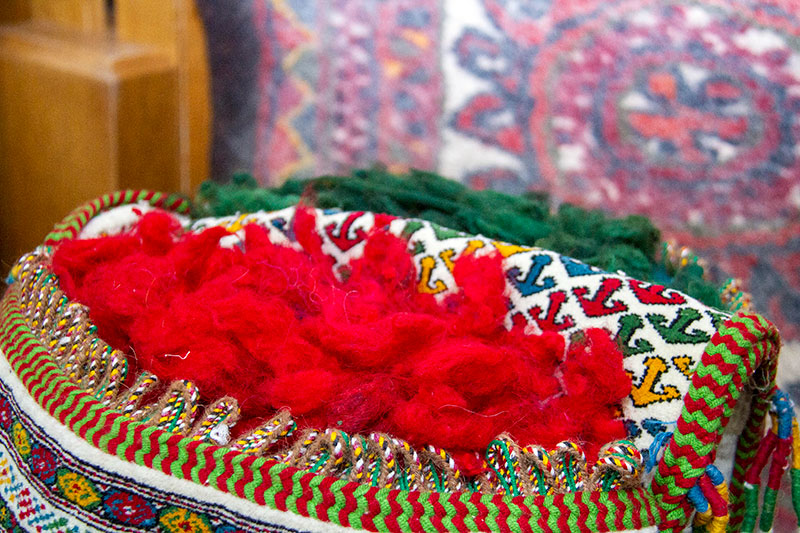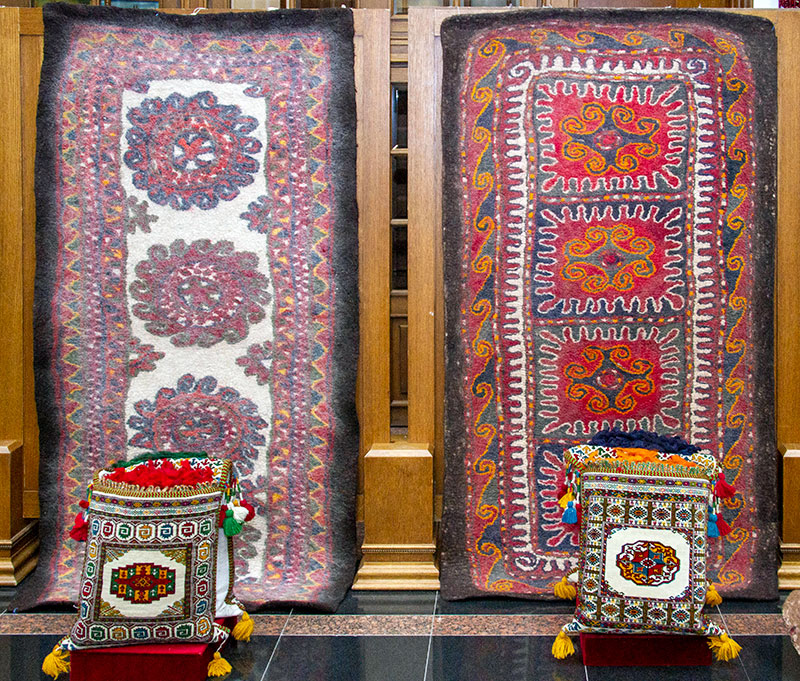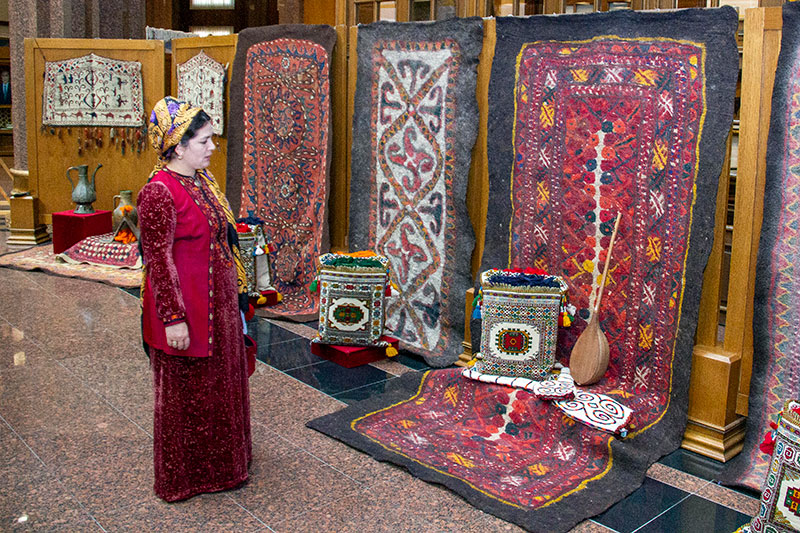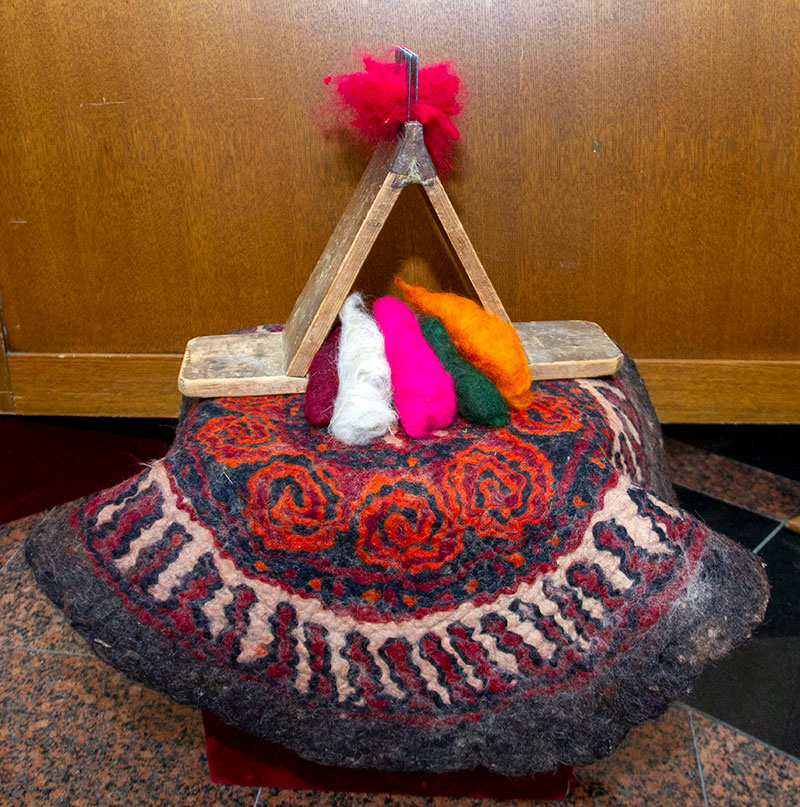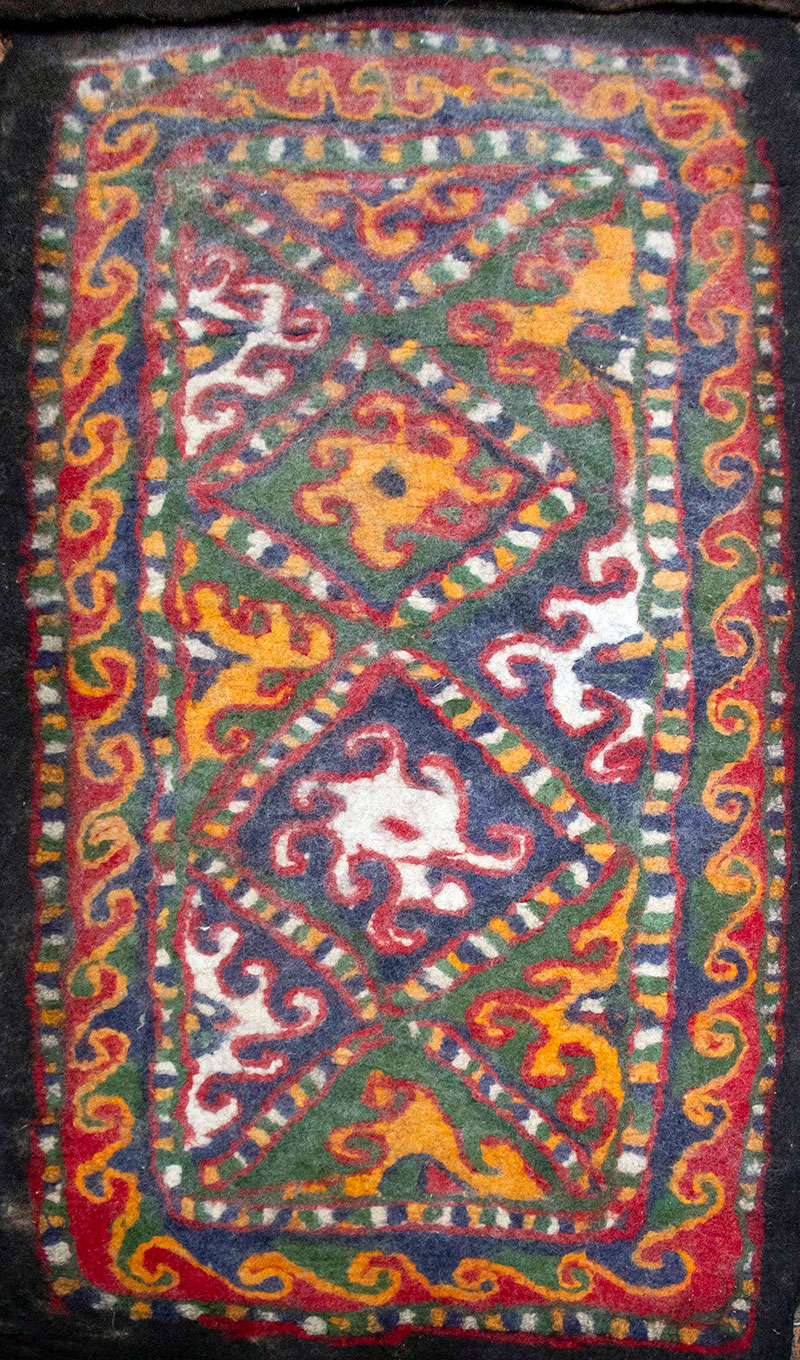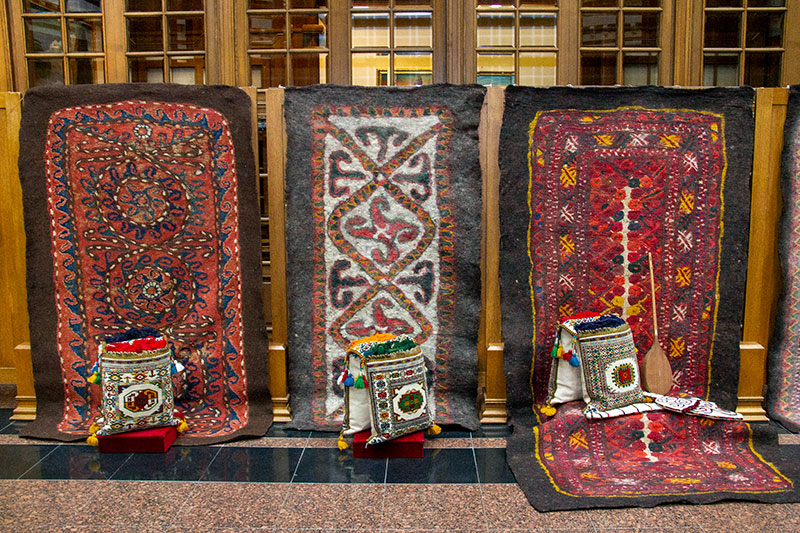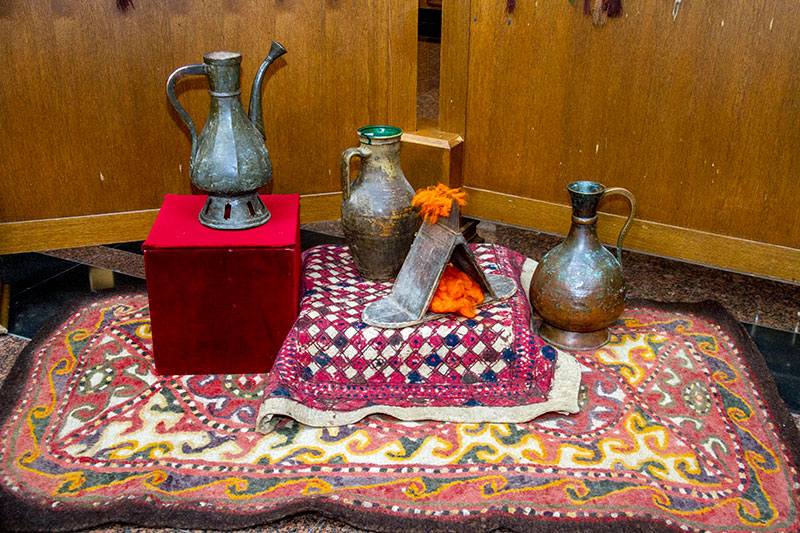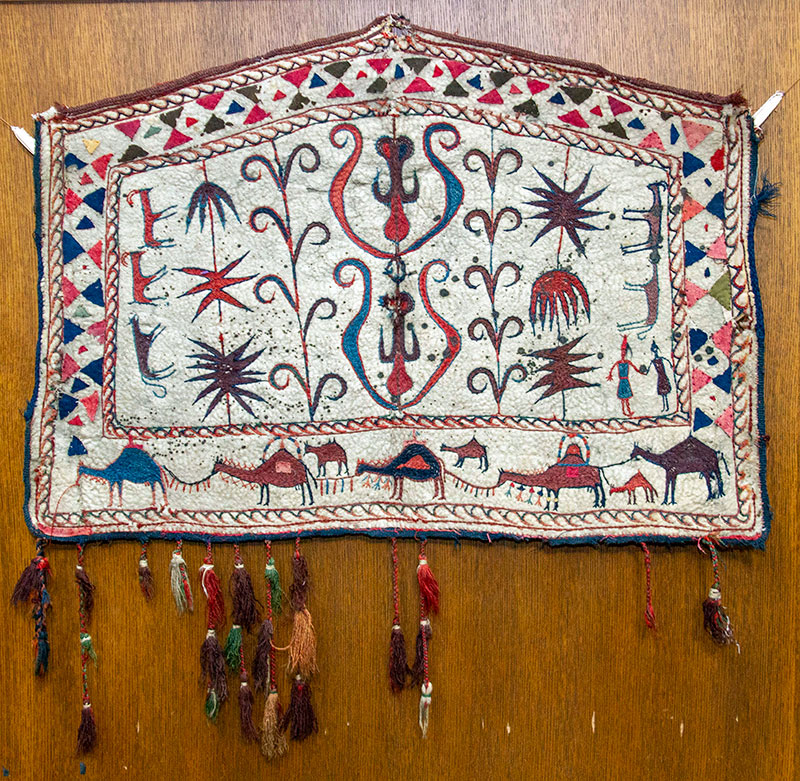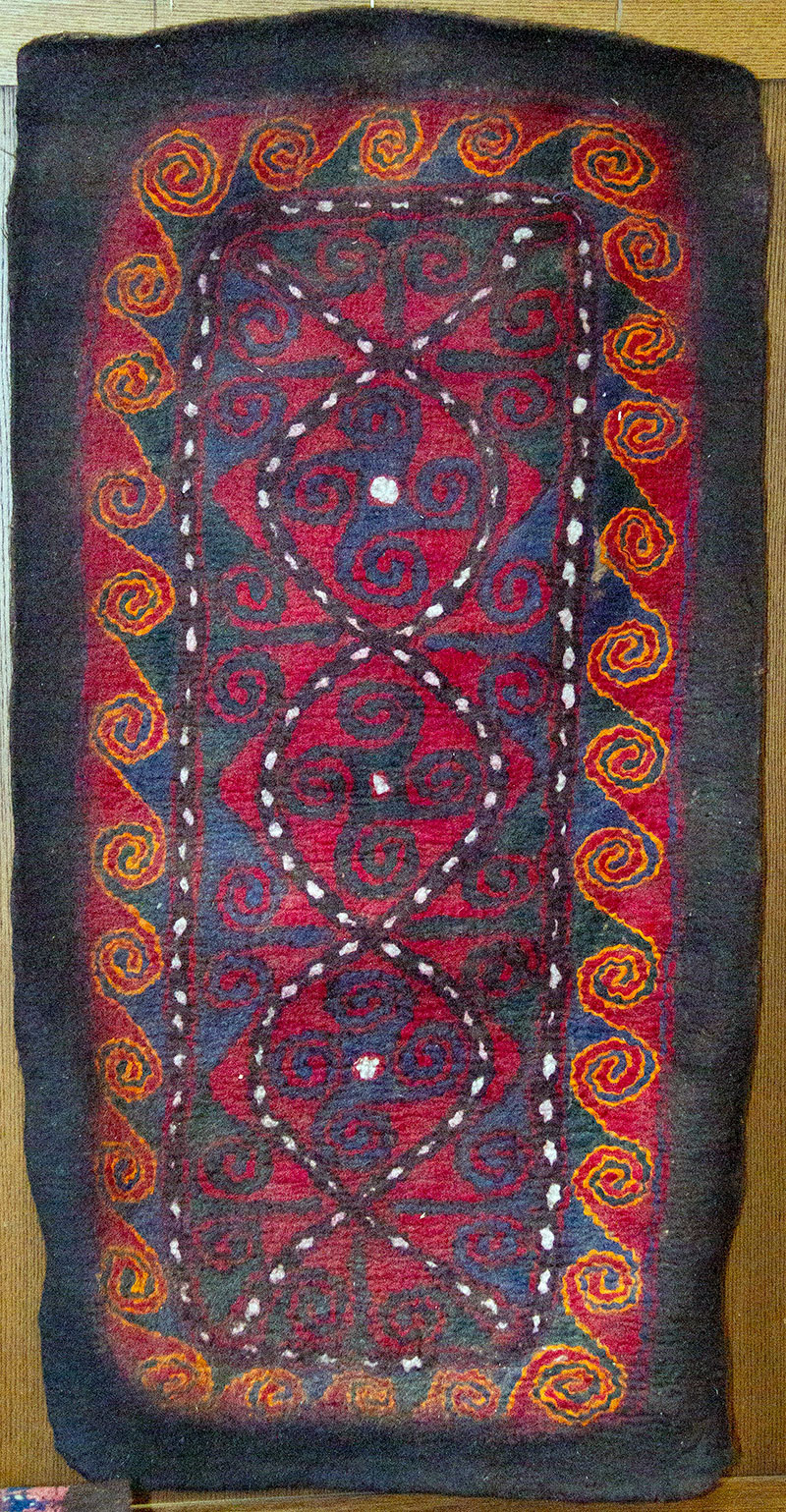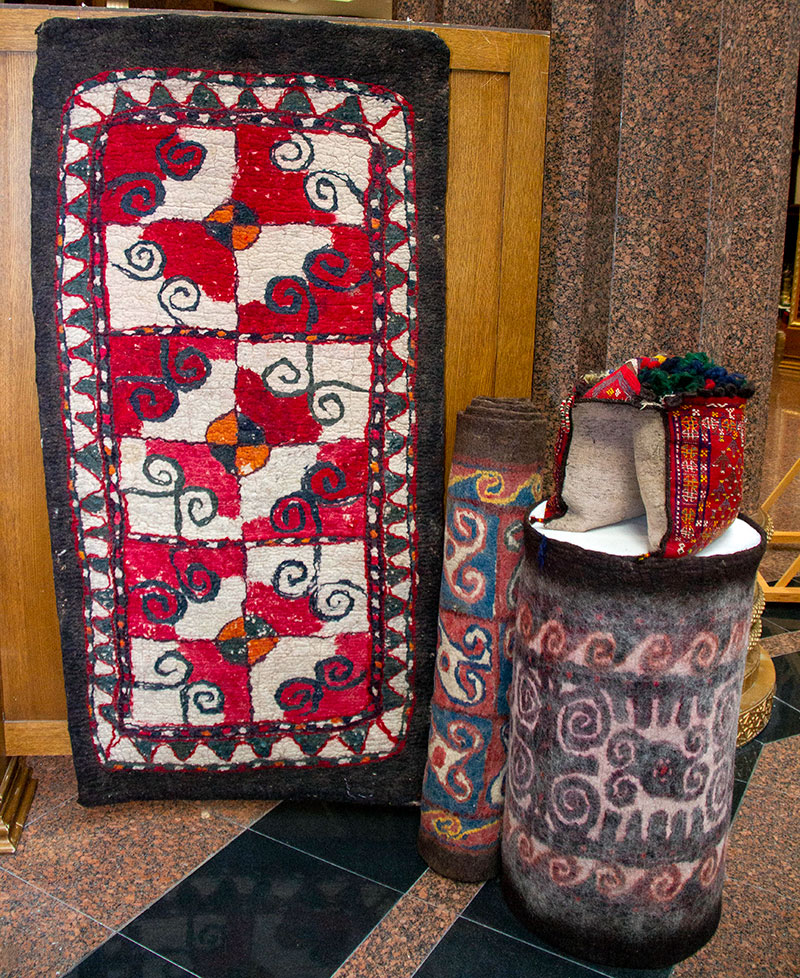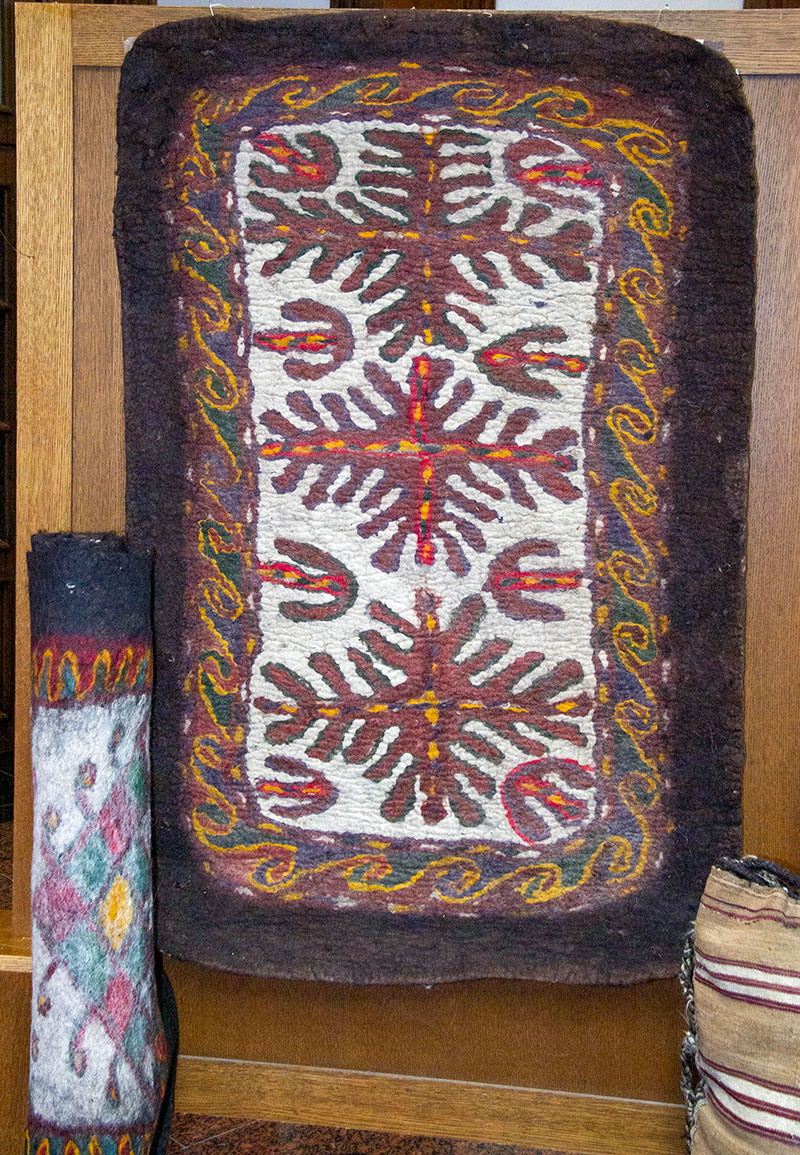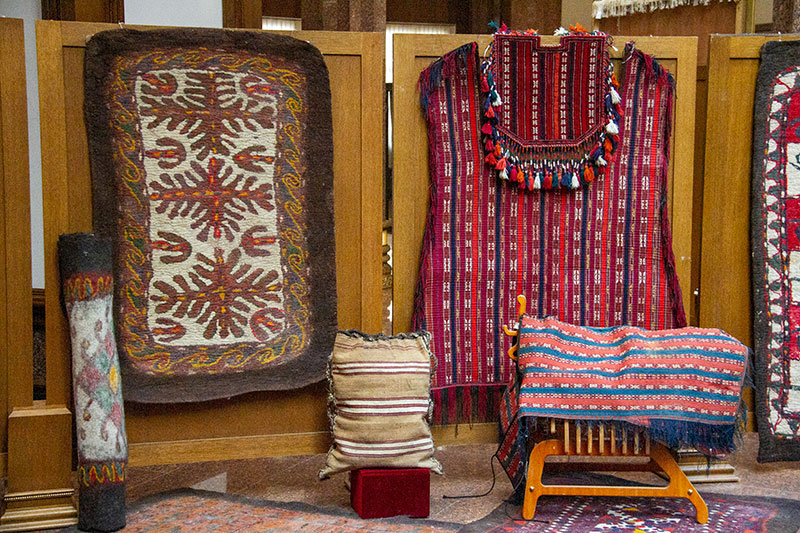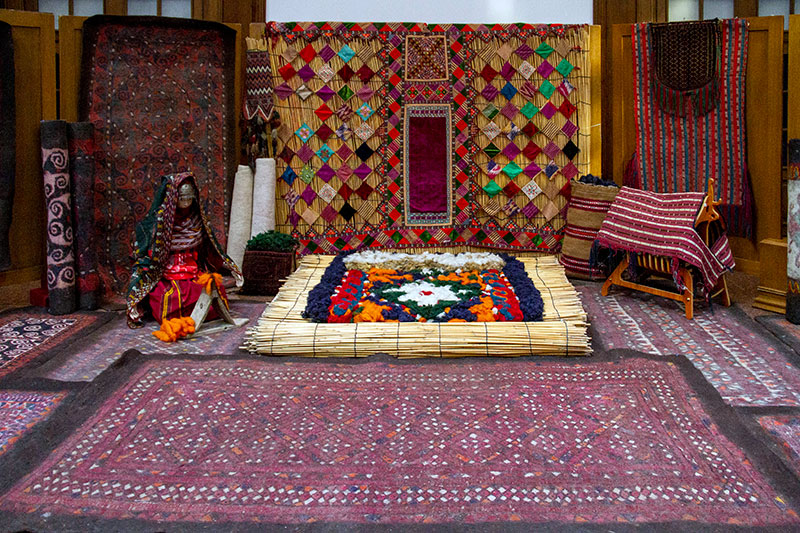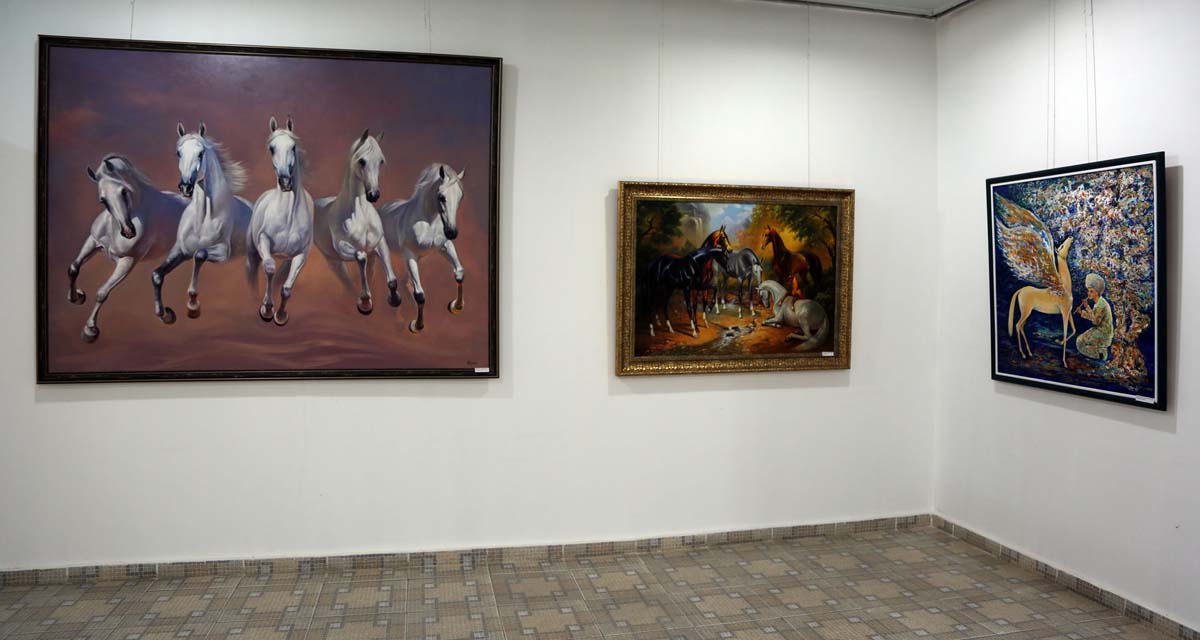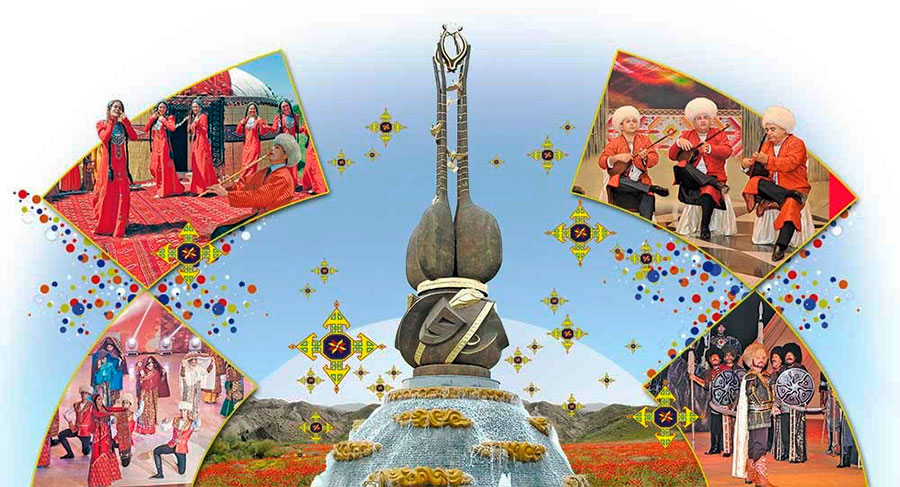On the initiative of the employees of the Department of Intangible Values of the Ministry of Culture, the State Museum of the State Cultural Center hosted a scientific-practical conference “Felt is an example of the perfect artistic creativity of Turkmens”. A kind of prelude to it was an exhibition of products made of felt, which are stored in the storerooms of the museum.
Each exhibition of art values is considered successful if it surprises visitors with its sights. This exhibition turned out to be very rich in sights. Acquaintance with them took place to the soulful music of three bakhshis invited from the conservatory.
It is known that camel hair is considered sacred for Turkmens and it is not allowed to step on products made of camel hair. Therefore, mutton wool is used for felt mat, which, before turning into a felt felt, goes through a long process of processing: it is washed, itched, dyed, placed in patterns, doused with boiling water and rolled. Part of this process is presented at the exhibition with the help of mannequins.
And here is the first attraction - a felt felted by the museum staff. The history of its appearance is as follows: once the former director of the museum, Ovezmuhammet Mametnurov, brought a bale of mutton wool and suggested that the workers make a felt mat out of it with their own hands. The idea was liked, and a group of women undertook to implement it. Now this felt is one of the exhibits of the museum, indicating how widespread this type of craft is among Turkmen women.
Thematic felt mat "Cotton" is made in an unusual palette for a felt felt - blue. The author of the felt mat, the brother of the People's Artist of Turkmenistan Aykhan Khadzhiev, A. Khadzhiev, managed to convey the atmosphere of cotton picking by several women in the felt mat.
Two beautiful felt-paintings were exhibited by the artist Gulya Kurbanova: “Germany through the eyes of Turkmen artists” and “Dedication to Rejep Rejepov's unfinished opera “Tales of the Karakum Wind”. With her works, Gulya Maylievna proved that the felt mat has unlimited possibilities in the transfer of artistic values. Gulya Kurbanova presented the first felt to the French Cultural Institute in Ashgabat, the fate of another felt became clear at this exhibition - the artist decided to donate it to the State Museum. Thus, the author determined the public fate of her works.
For many visitors to the exhibition, a large number of items made from felt felt were a discovery, many of which are still used in everyday life. For example, felt boots, more like golfs for a hero, blankets for pack animals for festive events, envelopes for a bride's dowry, covers for dutar and other musical instruments. As a rule, these products are made of white wool and decorated with appliqués of bright fabric and embroidery.
After an interesting and informative tour of the exposition of exhibits made from felt felt, the visitors of the exhibition, together with the museum staff, took part in a scientific and practical conference, which completed the action dedicated to the ancient and young art of felt felting.
